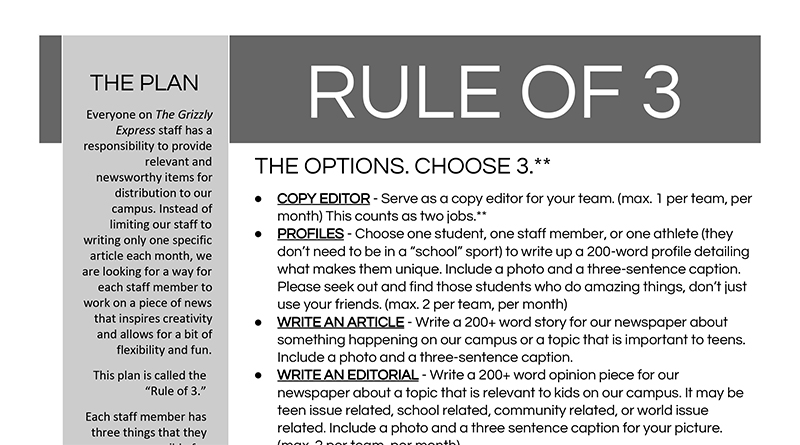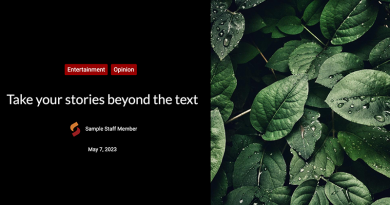Adapting the Rule of 3 for a Middle School Journalism Program
As both a newspaper and yearbook teacher, the one thing that I find most difficult is finding curriculum for my classes. I know that may sound odd, as there are hundreds of companies and web sites out there who sell just exactly that. But what makes it difficult is that I teach 12 and 13-year olds. I’ve tried using all the books and worksheets that my high school counterparts utilize, but one thing always gets in my way. The middle school/junior high brain.
For the most part, that early-teen hormonal brain doesn’t comprehend all of the high school lessons as quickly, or as easily as the high school student brain. A lot of what we teach in journalism is abstract thinking or experience-driven tasks, of which this subset of students has very little. So where does that leave me? Re-inventing the wheel. It’s like being a writer and copy editor who works in the junior novelization department of a movie house. I take something that I find and break it down into simpler terms. Directions have to be more detailed, assignments have to be broken into smaller steps, and everything has to be written in kid-friendly language that not only explains the basics of what to do, but also what not to do. While my kids still learn the journalism jargon, it becomes essential to any lesson or assignment for the kids to know three things: 1) what exactly I’m supposed to be doing, 2) what rules/steps I’m following to get me to do what I’m supposed to be doing, and 3) what degree of effort and “assignment completeness” you’re expecting from me.
I know it sounds silly, but journalism in the eyes of most pre-teens and early teens is code for “how many times can I get myself and my friends into the newspaper or yearbook?” and “what can I get away with without my teacher knowing.” It’s a tough road to transform these mini adults in the making into budding journalists, but it’s entirely worth it. Even if it means re-inventing the wheel time and time again.
Adapting the Rule of 3 for my program meant looking at what we are allowed to do and publish with this age group, and balance that with a workload that is appropriate for their skills. None of my kids have their license, so anything that required travel was out. Topics that interest my kids are different from that of high school kids, so I took that into consideration as well. Finally, I sat down with my editorial staff and discussed with them the workload of the Rules of 3. Seventh and eighth graders take longer to write, edit, and revise since the processes are still not ingrained. That meant easing things up for my editors so that they could balance their extra job responsibilities with that of writing their own articles.
- You can find the Rule of 3 Explanation Sheet I adapted here
- You can find the Rule of 3 Selection Sheet students use to choose from here
It is still a work in progress. We are changing and further adapting the Rule of 3 as we move through this first month’s cycle. But I am fully confident that after experimenting with a new way of doing things, my kids will be ready to tackle any high school journalism program with a solid base of understanding and good work habits.






The second selection on the Rule of 3 Selection topics was the same as the first one. Is there a list of topics, because this looks really interesting and worth doing!
This is a great starting off point. I’m the journalism teacher at a middle school too, and my goal is to start a quality school paper (online or print). Do you have any other resources that you’re willing to share that helps the process?
Thank you for sharing this! I wish JEA offered more resources for middle school. You are absolutely right — these students’ brains are just wired differently. I have a difficult time connecting with them over the importance of journalism. Any other resources that you could share as well would be much appreciated!